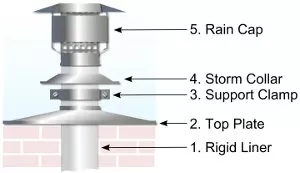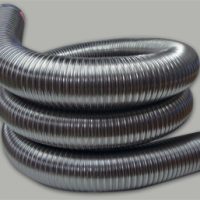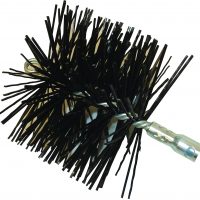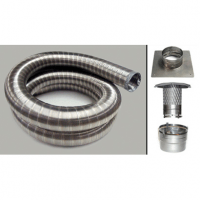Rigid chimney liner is the best that the industry offers. It is superior in many ways. It also requires some skill and understanding to install. We will go over some of the more difficult parts of the installing rigid chimney liner.
Depending on the overall length of the chimney, because the rigid chimney liner can get quite heavy, you may want to use a rope to hold the weight of the liner and a very strong carabiner. You can hook the outside of the Tee on the very bottom, not in the opening on the side, and put the rope on the outside of the rigid chimney chimney liner. Fold the rope over the edge of the chimney and use your foot to stand on the rope to stop it from sliding down.
Now the best thing to do when installing rigid chimney liner is to extend the rigid pipe all the way to the bottom, so it touches the ground. This way the chimney liner is actually supporting itself and standing up on the ground. This will require precise measuring, but it is easy to do. You will put a piece of rigid liner on the bottom of the Tee. If you have a clean out door you want to use, you will just cut out a square hole in the side of the pipe.
One other option instead of using a rope is to us the support clamp that comes with the rigid chimney liner kit. You can loosen the clamp and lower the chimney liner to where you want it to install the next pipe and then tighten it again.
Then once you have your Tee installed and everything is lined up on the bottom you can finish the top. If you are using the rope and the chimney liner is not extending down to the bottom, you will need to secure the support clamp or loosen the band clamp off of the snout and fish the band clamp around the back side of the body because the rope is in the way. Make sure you don’t get the rope stuck in the band clamp.
To finish off the top you first install the top plate with a bead of silicone underneath. Then the support clamp securely tightened and fastened to the rigid chimney liner. Then on top of the support clamp goes the storm collar, then finally the cap is installed. Around the storm collar and the rigid chimney liner you need to install a fine bead of silicone to make that seal waterproof.
Installing rigid chimney liner systems can be easier than you think. Just make sure you have everything you need before you start. If you need a special size or part made, we can make it.







